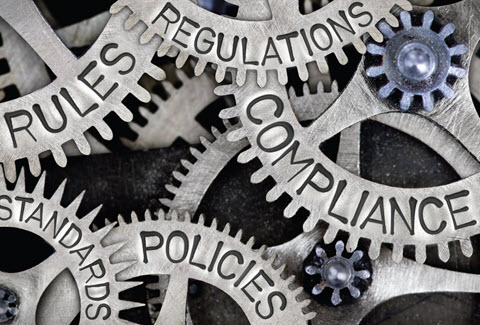Health Information Compliance Alert
Feds Renew the PHE … Again
But: Don’t slack on compliance just because the PHE keeps getting renewed.
If you were counting on the COVID-19 public health emergency (PHE) getting another reboot, you’re in luck.
Now: With COVID cases on the rise, the feds have renewed the PHE for another 90 days. HHS Secretary Xavier Becerra signed a tenth extension of the COVID-19 public health emergency, effective July 15 and lasting through October.
The extension follows “a recent rise in omicron variant cases,” notes attorney Jacob J. Harper with law firm Morgan Lewis.

“The extension of the PHE, while perhaps pushing off permanent adoption of a telehealth solution, will provide additional time for providers who have been relying on these flexibilities to continue to develop permanent policies and operational workflows as the industry moves into the ‘new normal,’” Harper continues in online analysis.
“Continuation through October should come as a welcome development for healthcare providers,” praise attorneys Gayland O. Hethcoat II and Fernanda Sanchez Jara with law firm ArentFox Schiff. “For healthcare providers, the COVID-19 pandemic has been characterized by ongoing regulatory waivers and relaxed enforcement policies intended to ease the compliance burdens on the U.S. health delivery system as its front-line clinicians have responded to the virus,” Hethcoat and Sanchez Jara say in online analysis.
What’s next? “As the pandemic extends into its third year, many are wondering when the federal government will finally let the PHE expire,” notes lobbying firm Chamber Hill. “Pandemic fatigue is growing and in recent months, Republican lawmakers have been pushing for the administration to let the PHE end as a signal that the country is going back to normal,” the firm observes in online analysis.
First, providers can probably count on the entire 90-day extension until Oct. 13, since the nine previous extensions have gone the full time. “While the federal government could end the PHE at any time, it has previously extended the PHE uniformly for 90-day periods, and there is little reason for it to change course or end the PHE in the middle of a 90-day period,” Harper points out.
Second, the Biden administration has repeatedly said it will provide 60 days’ notice before ending the PHE. “While the federal government could, from a legal perspective, forgo its pledge to states of a 60-day notice, it is unlikely that it would do so, given the potential chaos in the healthcare market that could ensue,” Harper expects.
That means the next potential PHE end date would be Oct. 13. But that’s not so likely either. “Labor shortages persist, and burnout remains a struggle across the healthcare sector as worries about a recession loom large,” Hethcoat and Sanchez Jara note.
In a May letter to Secretary Becerra, the American Hospital Association, the American Nurses Association, and other professional and health groups urged HHS to “maintain the … PHE until it is clear that the global pandemic has receded and the capabilities authorized by the PHE are no longer necessary. This will help prevent any future surges from threatening the health and safety of patients and the ability of health care professionals to care for them.”
The letter cites the rise in variant cases and urges the administration “to maintain the PHE until we experience an extended period of greater stability and, guided by science and data, can safely unwind the resulting flexibilities.”
The AHA and other groups do acknowledge that “Americans are frustrated with the pandemic and the related ongoing public health measures resulting from it. Healthcare providers and others across the country’s health care infrastructure are exhausted as well.”
However, “COVID-19 and its variants take full advantage when we let our guard down,” the letter warns. “The numerous flexibilities provided under the PHE have allowed for regulatory waivers and flexibilities that have proven vital in safely caring for patients and critical in enabling the country’s health care system to quickly adapt and tackle COVID-19 and its variants.”

The Biden administration seems disposed to listen to such arguments, judging from the latest extension. And it’s likely to do so again for the next extension, which will fall “less than a month away from the 2022 midterm elections,” Chamber Hill points out. “If Congress fails to enact legislation to address temporary pandemic measures this summer, the administration would be wise to renew the PHE once again this fall,” the lobbying firm believes. “Otherwise, it would be forced to reckon with the political fallout of starting the expiration countdown for popular emergency health measures.”
Prediction: “Letting the PHE expire will trigger health care coverage cliffs and without new laws in place to allow the states and providers a smoother transition to a post-pandemic world, [it] will be far worse for patients,” Chamber Hill says. “Thus, the PHE is likely to remain in effect for the rest of 2022,” it forecasts.
Do this: With the PHE’s exact end date very far from determined, providers would be wise to prepare now for its end, Hethcoat and Sanchez Jara advise. “Healthcare providers should continue to monitor the PHE and be alert to the termination or scaling back of state COVID-19 policies, including those adopted via a governor’s executive order during the height of the pandemic,” they suggest.
“Providers are well-advised to audit and evaluate how they have utilized regulatory waivers and relaxed enforcement policies throughout the pandemic,” Hethcoat and Sanchez Jara continue.
“The sunsetting of these policies means that regulators will be more stringent in their compliance expectations of providers. Thus, it’s imperative for providers to know when a waiver or relaxed enforcement policy is no longer operative — lest they incur the potential liability of a regulatory violation by unwittingly relying on a policy that is no longer valid,” they caution.
Resource: Find the extension notice at https://aspr.hhs.gov/legal/ PHE/Pages/covid19-15jul2022.aspx.
Health Information Compliance Alert
- Telehealth Services:
Feds Focus on the Evolution of Telehealth Post-COVID
Expect more changes in the coming months, too. If your organization has relied heavily on [...] - Congress Acts to Bolster Telehealth Long Term
As the Centers for Medicare & Medicaid Services (CMS) begins to put out policy proposals [...] - Policy:
Federal Agencies Collaborate to Thwart Telehealth Discrimination
New guidance offers tools to deal with telehealth inequity. The pandemic revealed systemic health inequities, [...] - COVID-19:
Feds Renew the PHE … Again
But: Don’t slack on compliance just because the PHE keeps getting renewed. If you were [...] - Reader Questions:
Safeguard ePHI from Unauthorized Disclosure With This Advice
Question: A provider in our practice informed us that they have been sending patient records to [...] - Reader Questions:
Know the Facts on Hiring HIPAA Audit Help
Question: Our large, primary care practice takes HIPAA very seriously, and we do our best to [...] - Reader Questions:
Boost Documentation Accuracy With This EHR Advice
Question: We’ve heard many warnings about the dangers of using EHR templates, but we aren’t sure [...] - Enforcement News:
OCR Continues to Focus on Right of Access Violations
If your patients ask for a copy of their medical files, you don’t want to [...] - Enforcement News:
Be Aware of Healthcare-Related Spoofing Schemes
If you or your patients get a call that shows up on caller ID as [...] - Enforcement News:
Weigh In on ONC’s Annual Update for Interoperability Standards
The HHS Office of the National Coordinator for Health Information Technology (ONC) is asking all [...]

